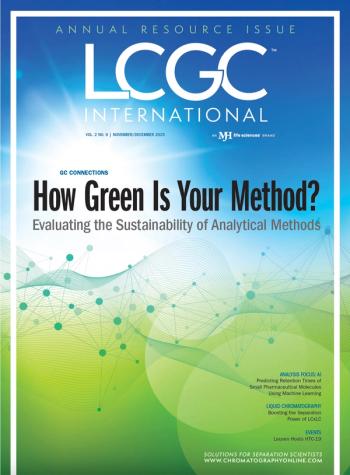
- The Application Notebook-10-02-2014
- Volume 0
- Issue 0
Characterization of Amyloid Fibrils Formed by the Cell Death Regulator Bcl-2
Malvern Instruments
Proteins of the Bcl-2 family are molecular transducers sensitive to internal and external apoptotic signals that play a key role in the regulation of apoptosis. Their aggregation can lead to the formation of amyloid fibres because of protein misfolding; these are associated with numerous diseases.
The work described in this application note focused on the in vitro formation of aggregates by a Bcl-2 protein initiated by incubation of the protein at 37 °C. Multi-detection size-exclusion chromatography (SEC) was used to characterize the early events occurring during the aggregation process following incubation for 1 day and 1 week. SEC was performed using a Superose 6HR (GE Healthcare) with a buffer of 20 mM sodium phosphate, pH 8, and 150 mM sodium chloride. The Viscotek TDA with UV, RI, light scattering, and viscometer detectors was used to determine the molecular weight (MW) and intrinsic viscosity (IV).
Results and Discussion
Figure 1 is a typical chromatogram following 1 day of incubation at 37 °C. Three main species were detected, with molecular weights of 74 kDa, 51 kDa, and 25 kDa. The main population of this sample was found to be the protein's monomer. An additional species was detected by the light scattering detector eluting at 11 mL, which is a high-molecular-weight aggregate but at very low concentration.
Figure 1: Chromatogram of Bcl-2 from the Viscotek TDAmax. RALS (green line) and refractive index detector (red line). Inset shows the molecular weight distribution of the different species within the sample.
The samples were also analyzed after incubation for 1 week at 37 °C. Following this extended incubation period more aggregates were found to have formed. The SEC experiments showed that the first step of the fiber growth is the formation of small aggregates, mostly dimers and trimers, which further assemble into larger aggregates. This information was only possible to obtain with the use of multi-detector SEC using the TDA system.
Work performed in conjunction with the Institut Pasteur, Paris, France
References
(1) A. Chenal, C. Vendrely, H. Vitrac, J.C. Karst, A. Gonneaud, C.E. Blanchet, S., Pichard, E. Garcia, B. Salin, P. Catty, D. Gillet, N. Hussy, C. Marquette, C. Almunia, and V. Forge, J. Mol. Biol. 415, 584–599 (2012).
(2) J.C. Karst, A.C. Sotomayor-Pérez D. Ladant, and A. Chenal, Methods Mol. Biol. 896, 163–77 (2012).
Malvern Instruments Ltd.
Enigma Business Park, Groveland Road, Malvern, UK
Tel: +44 (0) 1684 892456 E-mail:
Website:
Articles in this issue
about 11 years ago
Hyaluronic Acid (Polysaccharides)about 11 years ago
Molecular Weight Determination of LMWH SEC–MALS vs. SEC–UV–RINewsletter
Join the global community of analytical scientists who trust LCGC for insights on the latest techniques, trends, and expert solutions in chromatography.



